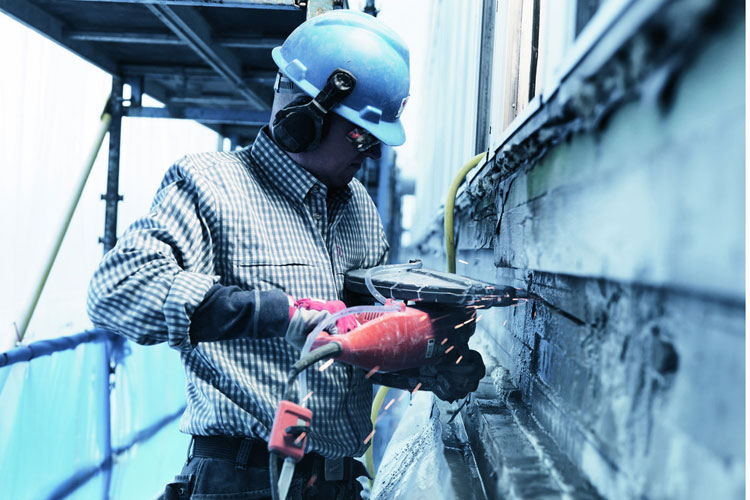Concrete is one of the most widely used construction materials in the world. Safety issues exist in all phases of concrete production, including the manufacture of Portland cement and pre-cast concrete products, as well as during the use of concrete in construction.
Silica is component found abundantly in concrete, cement, brick, block, and mortar. Many of these materials are used every day across a wide variety of industrial settings, including construction, mining, manufacturing, maritime, and agriculture.
Occupational exposure to crystalline silica often occurs as part of common workplace operations involving cutting, sawing, drilling, and crushing of concrete, cement, brick, block, rock, and stone products.
Exposure to concrete and cement dust can irritate eyes, nose, throat and the upper respiratory system. Skin contact may result in moderate irritation to thickening/cracking of skin to severe skin damage from chemical burns.
These types of exposures can lead to the development of disabling and sometimes fatal lung diseases, including silicosis and lung cancer. Processes historically associated with high rates of silicosis include sandblasting, sand-casting foundry operations, mining, tunneling, cement cutting and demolition, masonry work, and granite cutting.
Suggested Industrial Vacuums for Recovery Cement & Concrete Dust
PrestiVac HEPAPlus* Vacuums are specifically designed to safely vacuum toxic dusts. Equipped with a Certified Absolute HEPAPlus*filter with an efficiency of 99.995% on 0.2 micron so there is no risk of exposure or contamination for the operator or the environment. These vacuums are tested for absolute filtration. Testing Method: IEST RP-CC034.3. H14. MIL-STD 282 / A.S.T.M. - D2986-91. MPPS method EN 1822.
Which Industries are at Risk with Concrete & Cement Dust?













